Syriac and Eastern Christianity
The History of Mar Jab-Alaha and Rabban Sauma
Histoire de Mar Jab-Alaha, Patriarche, et de Raban Sauma
By Paul Bedjan
Series: Kiraz Chronicles Archive 14
ISBN: 978-1-59333-418-5
This books gives the Syriac text of the account of Yaballaha III, Church of the East Patriarch, and his vicar Bar Sauma, the Mongol Ambassador to the Frankish courts at the end of the thirteenth century.
$231.00
Selected Dialogue Poems [Sugyotho Mgabyotho]
Series: Bar Ebroyo Kloster Publications 1
ISBN: 978-1-59333-442-0
Dialogue poetry is a genre that began in ancient Sumer and continues in rich fashion in the Syriac tradition. Sebastian Brock has selected an edition of twenty six dialogue poems: between the Church and Zion; Abraham and Isaac; Joseph and Benjamin; the body and the soul; Joseph and Mary; the thief and the cherub; Mary and the Magi; the church and the believers; the angel and Mary; among the months of the year; between the angel and Zachariah; death and Satan; Jesus and the faithful; the two thieves; Jesus and John; the sinful woman and Satan; Abel and Cain; and wheat and gold.
$119.00
Six Homilies by Jacob of Sarug
ISBN: 978-1-59333-445-1
Jacob of Sarug (451–521) was a prolific writer of the Syriac Church and was known as “the flute of the Holy Spirit and the harp of the believing church”. Sebastian Brock gives the Syriac edition of six homilies written by Jacob: on the birth of our Lord; on the baptism of our Lord; on the Great Lent; on Palm Sunday; on Good Friday; on Easter Sunday. The text is based on an ancient manuscripts preserved in London and dated 609.
$109.00
Chaldean Christian Doctrine in the Urmia Dialect
Doctrina Christiana
By Paul Bedjan
ISBN: 978-1-59333-420-8
Paul Bedjan produced this catechism to advance the knowledge of Catholicism among Aramaic-speaking Christians of the Middle East. The book is written in Modern Aramaic, in the dialect of Urmia. The book is of interest not only for pedagogical purposes among the Aramaic speakers, but also will give the Neo-Aramaic scholar a literary text from the late nineteenth century.
$123.00
The Book of Ethics
Edited by Paul Bedjan
ISBN: 978-1-59333-421-5
Bar Hebraeus, a celebrated Syriac writer of the thirteenth century, wrote on nearly every subject imaginable. The Book of Ethics is a manual of discipline and etiquette covering secular life as well as spiritual life.
$241.00
A Greek Fragment of Tatian's Diatessaron from Dura
With Facsimile, Transcription and Introduction
Series: Analecta Gorgiana 2
ISBN: 1-59333-368-4
Discovered in 1933, a fragment of Tatian’s Diatessaron is published here with critical apparatus, a facsimile, and a transcription. The fragment, a discarded portion of a scroll with 14 surviving lines of text, was likely used in the worship of a third century C.E. chapel excavated at Dura Europos.
$41.00
Life of Saint Nino
Series: Analecta Gorgiana 3
ISBN: 1-59333-471-0
This translation makes readily available the basic hagiography of St. Nino. Apart from her personal significance, St. Nino represents the important place that women held in the introduction of Christianity to Georgia. Text critical material is offered, and chapters 8 through 11 of the Armenian version are presented.
$52.00
The Place of the Peshitto Version in the Apparatus Criticus of the Greek New Testament
Series: Analecta Gorgiana 4
ISBN: 1-59333-472-9
This essay by Gwilliam explores the vital role of the Syriac Peshitta for textual criticism of the New Testament. While maintaining the priority of the Greek, Gwilliam explores connections and disagreements between the Syriac and the traditional text. An apology for the Peshitto and problems associated with it are openly discussed.
$44.00
Gospel Texts and the Acts of Saint Thomas from Mount Athos
By Kirsopp Lake
Series: Analecta Gorgiana 5
ISBN: 1-59333-473-7
A rare glimpse into the wealth of manuscripts held by the community of Mount Athos, this volume includes material from codices psi and Evang. 1071, and chapters from Acta Pilati, and a fragment of Acta Thomae. A catalogue and description of the manuscripts Lake viewed on his 1899 visit to Mount Athos and substantial introductions to each piece round out this useful study.
$54.00
Baptism and Christian Archaeology
By C. F. Rogers
Series: Analecta Gorgiana 6
ISBN: 1-59333-474-5
Rogers examines what archaeology reveals for the early centuries of the church. From the period of persecution to that of the northern invasions, iconographic evidence for the performance of baptism is presented. Eastern and Western Church fonts are compared and evidence for baptism without a font is assessed. The question of immersion is considered.
$60.00
Offices from the Service-Books of the Holy Eastern Church
Translation, Notes and Glossary
Series: Kiraz Theological Archive 2
ISBN: 1-59333-476-1
This important volume remains a valuable aid to scholars seeking a basic knowledge of Eastern Orthodox rites. A selection of offices, especially those under theological controversy in their time, is presented in the original Greek with an English translation.
$172.00
A Tract of Plutarch on the Advantage to be Derived from One's Enemies
Series: Analecta Gorgiana 7
ISBN: 1-59333-484-2
This Syriac edition with English translation is the historic first printing of such an edition of the manuscript available to European scholars. The unusual nature of Syriac monks translating the work of the Greek heathen Plutarch give this document inherent historical value.
$43.00
Syriac and Antiochian Exegesis and Biblical Theology for the 3rd Millennium
Edited by Robert D. Miller
Series: Gorgias Eastern Christian Studies 6
ISBN: 978-1-59333-487-1
The observation that scholarly work on the Bible is of little use to theologians is the starting premise for this volume. As a possible solution to this impasse, the contributors explore the potential insights provided by a distinct tradition of biblical interpretation that has its roots in both the patristic School of Antioch and in the Syriac Fathers, such as Ephrem and Jacob of Sarug, and which has survived and developed in the Churches of the Antiochene Patrimony, such as the Maronite and Syriac.
$156.00
Le Testament de Saint Éphrem
Series: Analecta Gorgiana 9
ISBN: 1-59333-486-9
A critical edition of the Syriac Testament of St. Ephrem, along with a French translation and notes, secure Duval’s study a place in the literature concerning this document. This historic study provides a translation in accessible French along with the necessary critical apparatus for scholars.
$52.00
The Materials for the Criticism of the Syriac Peshitto New Testament With Specimens of the Syriac Ma
Series: Analecta Gorgiana 14
ISBN: 1-59333-492-3
Gwilliam organizes the sources available for a critical edition of the Peshitto New Testament. These sources include the major manuscripts, Syriac Massorah, and the Arabic and Persian versions. He addresses revisions of the Peshitto New Testament and how the materials cited might be used for a critical edition of the Peshitto.
$46.00
The Epistle of Eusebius to Carpianus
A Critical Edition of the Syriac Text with an Essay on the Ammonian Sections, Eusebian Canons, and Harmonizing Tables in the Syriac Gospels
Series: Analecta Gorgiana 21
ISBN: 1-59333-499-0
Gwilliam presents a critical edition of the letter of Eusebius to Carpianus, as well as a Latin translation. Essays concerning this important epistle addressing the harmonization of the Gospels provides a valuable early insight into the Synoptic Problem.
$45.00
Acts of Saint George
By E. W. Brooks
Series: Analecta Gorgiana 8
ISBN: 1-59333-485-0
The classic hagiography of Saint George is presented here by E. W. Brooks. He gives a critical edition of the Syriac accompanied by an annotated English translation of the Acts. The “Acts of Saint George” stands in the tradition of early Christian devotional and historical records, and is a standard source for information about this formative saint.
$43.00
S. Ephraemi Syri, Rabulae Episcopi Edesseni, Balaei, Aliorumque Opera Selecta
Selected Works of St. Ephraem the Syrian, Rabbula, Bishop of Edessa, and Balai
ISBN: 978-1-59333-517-5
A useful source for Syrian documents generally hard to find, this compendium of the writings of St. Ephraem the Syrian, Rabbula, Bishop of Edessa, and Balai, the hymnographer, is a necessary addition to any Syriac scholar’s library. Presented in Syriac, they are available now as a handy resource.
$206.00
Light on the Four Gospels from the Sinai Palimpsest
By Agnes Lewis
Series: Kiraz Theological Archive 16
ISBN: 978-1-59333-530-4
Commenting on an invaluable document that she personally found, Agnes Smith Lewis expresses her professional insights on this earliest extant version of the Syriac Gospels. This fourth century document, erased and written over, was discovered in the library of St. Catherine’s Monastery on Mount Sinai in 1892. In addition to discussing New Testament variants Lewis also addresses the issue of how science and biblical teaching might coexist.
$142.00
A Translation of the Four Gospels from the Syriac of the Sinaitic Palimpsest
By Agnes Lewis
Series: Kiraz Theological Archive 17
ISBN: 978-1-59333-531-1
Agnes Lewis was the discoverer of the Sinaitic Palimpsest, the oldest Syriac manuscript of the New Testament. Here she publishes her English translation of that text to make it available to Bible students who do not read Syriac. Included are the four canonical Gospels and a list of omitted words and phrases as well as interpolations into the Textus Receptus.
$152.00
The Shabushti's Book of Monasteries
Al-Diyarat
By George Awwad
Series: Kiraz Chronicles Archive 19
ISBN: 978-1-59333-535-9
The venerable work of Abu al-Hasan Ali al-Shabushti (d. c. 1000), “The Book of Monasteries,” has come to hold an acclaimed status among scholars of early Arabic Christianity. Thoroughly annotated and cross-referenced, this Arabic edition by George Awwad is more than simply a catalogue of monasteries, it is a view into the culture of early Christianity as it developed in Iraq, Syria, Egypt, and Arabia.
$224.00
History of Arabic Literature in the Nineteenth and Early Twentieth Centuries
La Litterature Arabe au XIXe Siècle
Series: Christianity in the Islamic World 2
ISBN: 978-1-59333-539-7
In this edition of Cheikho’s literary survey of Arabic literature of the nineteenth century, the reader will find the Arabic original of Cheikho’s fine text. Difficult to locate outside the Middle East, Gorgias Press is now bringing this uncommon find to Arabists in the western world.
$219.00
Catalogue of the Mingana Collection of Manuscripts (1 of 3 volumes)
Series: Kiraz Historical Catalogues Archive 1
ISBN: 978-1-59333-542-7
This multi-volume set is the catalogue for the famed Mingana Collection of Syriac and Arabic manuscripts. A principal resource for scholars of early Middle Eastern documents, this set describes and summarizes the documents that make up this collection.
$239.00
Catalogue of the Mingana Collection of Manuscripts (2 of 3 volumes)
Series: Kiraz Historical Catalogues Archive 1
ISBN: 978-1-59333-545-8
This multi-volume set is the catalogue for the famed Mingana Collection of Syriac and Arabic manuscripts. A principal resource for scholars of early Middle Eastern documents, this set describes and summarizes the documents that make up this collection.
$196.00
Catalogue of the Mingana Collection of Manuscripts (3 of 3 volumes)
Series: Kiraz Historical Catalogues Archive 1
ISBN: 978-1-59333-546-5
This multi-volume set is the catalogue for the famed Mingana Collection of Syriac and Arabic manuscripts. A principal resource for scholars of early Middle Eastern documents, this set describes and summarizes the documents that make up this collection.
$196.00
Filter by
Filter by price
Filter by manufacturer

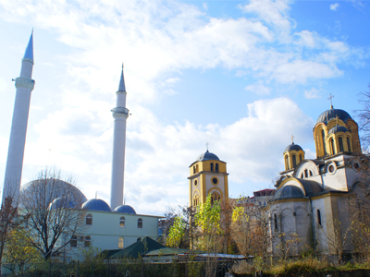
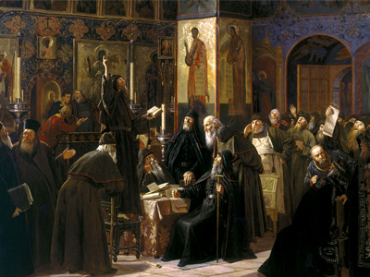
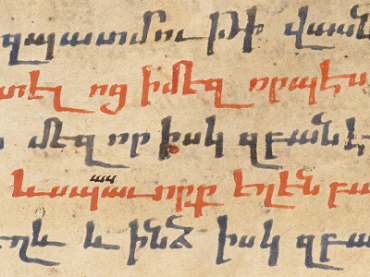
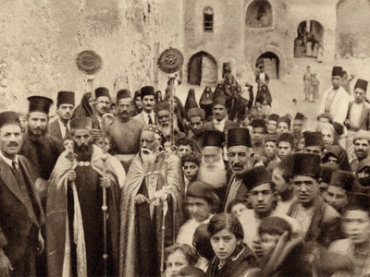
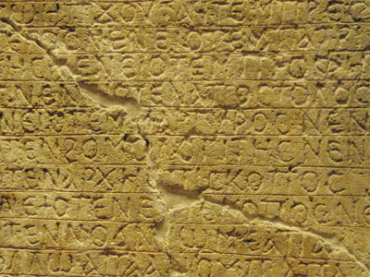
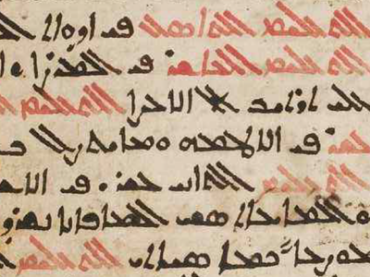

![Show details for Selected Dialogue Poems [Sugyotho Mgabyotho] ImageFromGFF](https://gorgiaspress450.forefrontinfotech.com/images/thumbs/0005821_selected-dialogue-poems-sugyotho-mgabyotho_360.png)






















